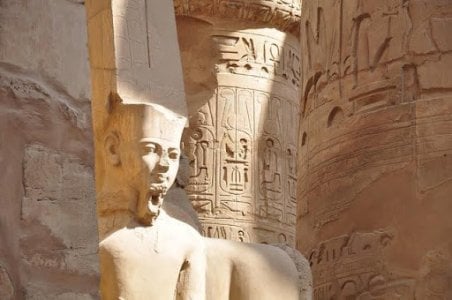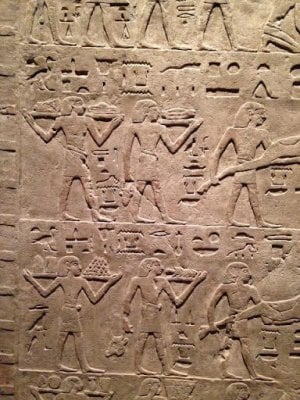Ancient Egyptian Hieroglyphs – Part 1/3
- Replies 3
Note from the Editor:
This article was written for the SDC by psychologist and member @Jan A. Jan A. works part-time, taking on clients under the Medicare Mental Health Care Plans. She works with people of all ages, from children to seniors! She is a member of the Macquarie University Egyptology Society and majored in history with a Bachelor of Arts degree at Melbourne University. Subsequently, Jan A. did an adult education course through Sydney University, learning to read basic ancient Egyptian hieroglyphs.
I thought it might be of interest to explore the complexities and use of Egyptian hieroglyphs.
Before starting, please note that the noun is 'hieroglyphs' as in 'the hieroglyphs took a long time to be deciphered' and the adjective is 'hieroglyphic' as in 'the study of hieroglyphic writing is fascinating.' Single 'letters' are termed 'glyphs'. Many ancient languages used various types of glyphs in their writing. Ancient Egyptians were by no means unique in this practice.
French linguist and historian Jean-Francois Champollion (1790-1832) is credited with deciphering hieroglyphic script in 1822, but he was not the first to help solve the puzzle of the hieroglyphs. British polymath Thomas Young also contributed to initial decipherment breakthroughs a few years earlier. In 1799, the Rosetta Stone was discovered near the town of Rashid (Rosetta) in the Nile Delta. It is carved with a decree issued in 196 BC on behalf of King Ptolemy V Epiphanes. The same decree is inscribed in hieroglyphic and demotic scripts at the top and with Ancient Greek at the bottom. The inscriptions on the stone of the same decree in three forms of writing helped to unlock the meaning of the hieroglyphs and opened our understanding of ancient Egyptian culture. The stone has resided in the British Museum since 1802, where it is on public display.
In the ancient Egyptian language, hieroglyphic writing was called 'medu netjer', meaning ‘the gods’ words’.
Hieroglyphic inscriptions and paintings have been found on temples and public monuments (see picture below). Most people were illiterate and would not have been able to read the writing. Inscriptions and painted writings inside tombs were not intended to be read by humans. They were for the soul of the deceased and for the gods. Many contained magical incantations to help the deceased on their journey into eternal life.

Hieroglyphic inscriptions and paintings have been found on temples and public monuments. Image Credit: Pixabay
Interspersed among the hieroglyphs, pictorial representations often illustrate the theme of the writing. In the picture below, servants are carrying food, illustrating the inscribed text.
Lorem ipsum dolor sit amet, consectetur adipiscing elit. Quisque in diam id erat facilisis consectetur vitae vel urna.
Ut lacus libero, suscipit auctor ipsum sit amet, viverra pretium nisl. Nullam facilisis nec odio nec dapibus. Integer maximus risus et velit porttitor ullamcorper
Read more for FREE!
Become a member today and join over 200,000 Australians already taking advantage of daily news, weather, petrol costs, games, jokes, deals and more.
-
FREE 400-page Discount eBook upon joining
-
FREE Aussie-made eBook & many more
-
Multiple daily discounts for members
-
No payment required
Register Faster Using
Or Register with email
Already a member?
Attachments
Last edited:








